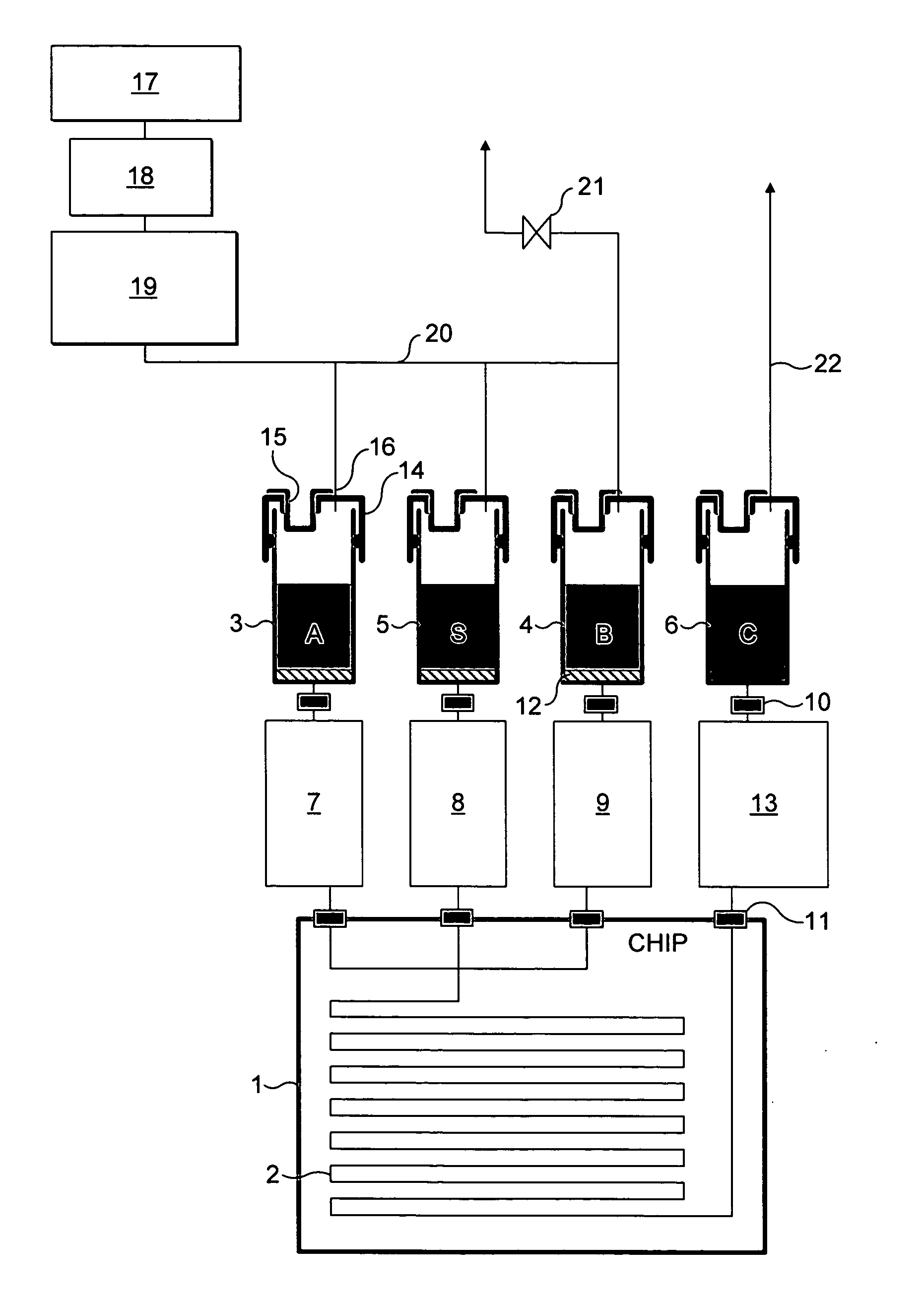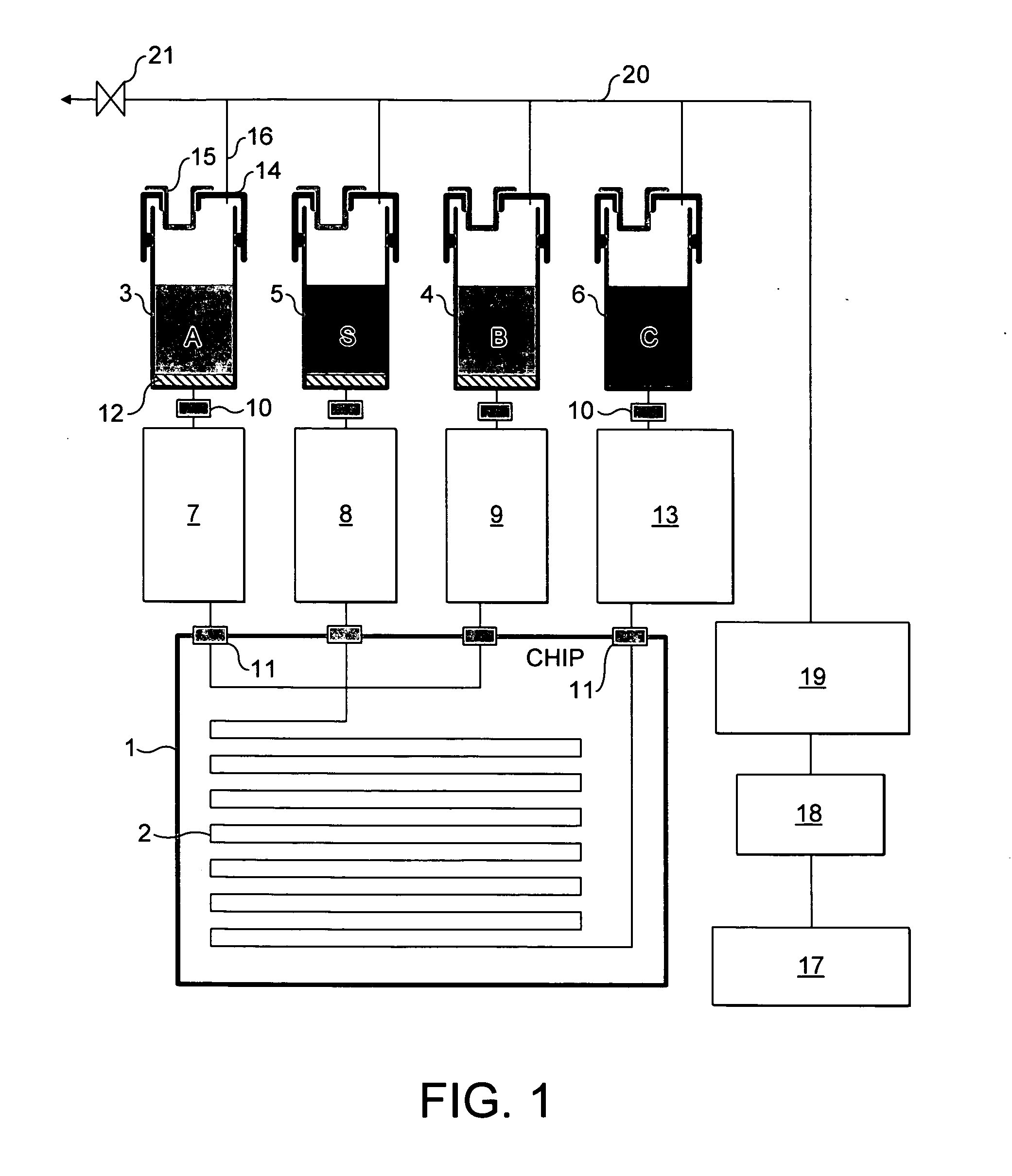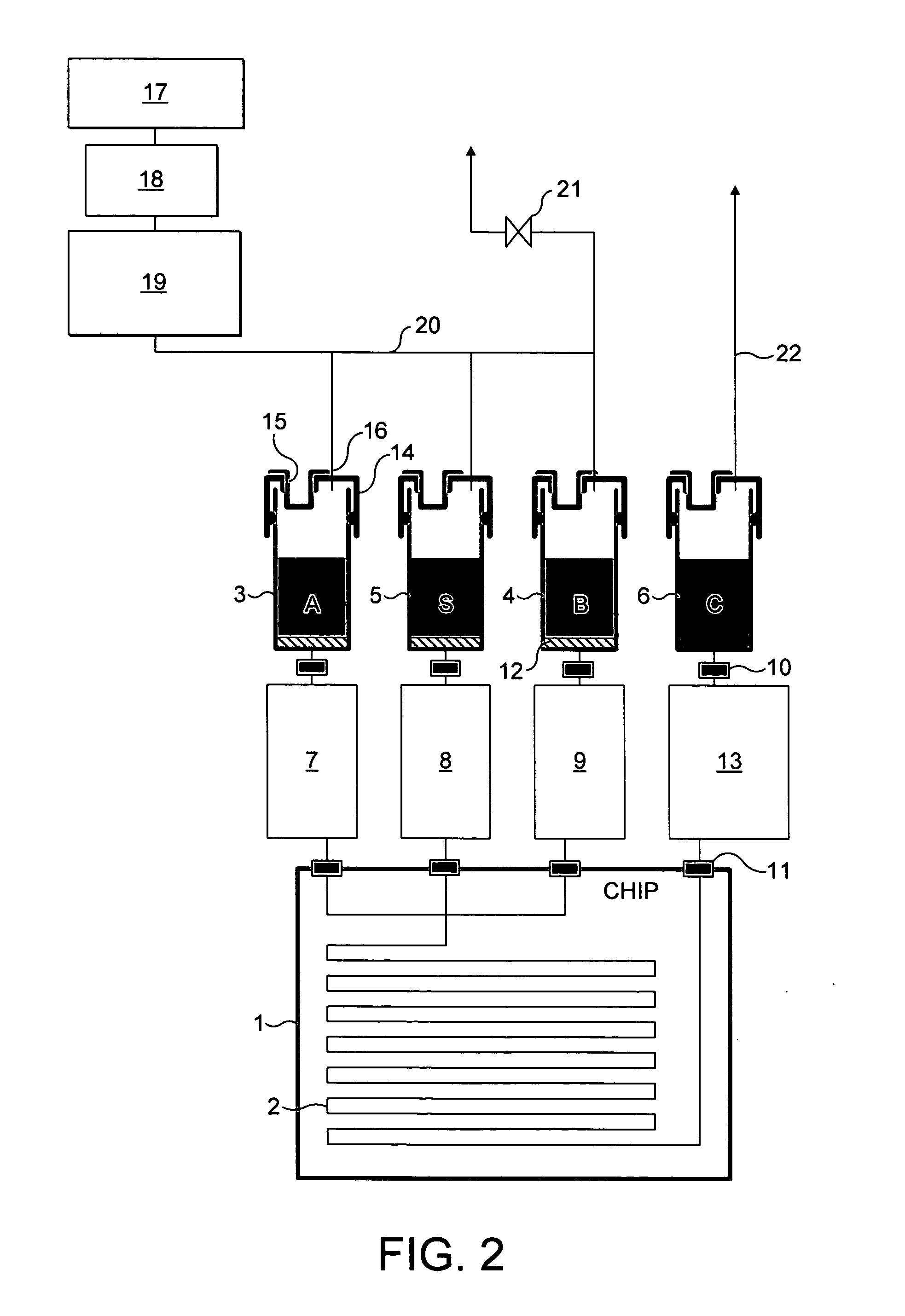Microfluidic system
a microfluidic system and microfluidic technology, applied in the field of microfluidic systems, can solve the problems of gas bubbles in the syringes that tend to get stuck in the bore rather than rising to the top, and the fluid flow rate is unknown, so as to achieve a simple and low pressure rating
- Summary
- Abstract
- Description
- Claims
- Application Information
AI Technical Summary
Benefits of technology
Problems solved by technology
Method used
Image
Examples
Embodiment Construction
[0035] The examples shown are microreactors. Although, the invention is equally applicable to other microfluidic systems such as Micro Total Analysis Systems (μTAS), or lab on a chip devices.
[0036] The terms “microfluidic system”, “microreactor” and “microchannel” are believed to be terms which are clearly understood in the art. The terms are best understood functionally as relating to systems / reactors / channels which are sufficiently small that diffusional mixing predominates and efficient heat transfer occurs, resulting in optimal reaction conditions in the microchannel. The dimensions should be sufficiently small that the flow results in a low Reynold's number (3) and a predominantly laminar flow regime.
[0037] Generally at its narrowest point, the reactor / channel should have, in cross-section, a maximum internal dimension of 5-500 μm, and preferably 5-250 μm. However, it is possible to envisage a channel which has a long thin cross-section having a dimension greater than 500 μm,...
PUM
| Property | Measurement | Unit |
|---|---|---|
| flow rate | aaaaa | aaaaa |
| diameter | aaaaa | aaaaa |
| boiling point | aaaaa | aaaaa |
Abstract
Description
Claims
Application Information
 Login to View More
Login to View More - R&D
- Intellectual Property
- Life Sciences
- Materials
- Tech Scout
- Unparalleled Data Quality
- Higher Quality Content
- 60% Fewer Hallucinations
Browse by: Latest US Patents, China's latest patents, Technical Efficacy Thesaurus, Application Domain, Technology Topic, Popular Technical Reports.
© 2025 PatSnap. All rights reserved.Legal|Privacy policy|Modern Slavery Act Transparency Statement|Sitemap|About US| Contact US: help@patsnap.com



